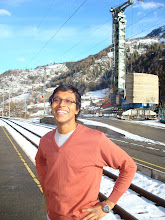ManU vs Liverpool ( 21 Mar 2010 )
Liverpool kicked off the first half and had dream start,Superman Torres heading the ball into the net within five minutes and giving Liverpool a clear advantage over their bitter rivals. Old Trafford was shell shocked, the ManU fans dumbstruck and absolutely silent. But within minutes Mascherano committed a silly foul on Valencia, pulling him behind when he was making a run into the box. Valencia was clever enough to get into the box before going crashing to the ground. The result, ManU was awarded a spot kick. Rooney steps up to take the shot but before that Torres expressed his disgust by kicking the area marked for keeping the ball. The Liverpool goalkeeper leapt the correct way and prevented the ball from going into the net but Rooney made no mistake in slotting the ball on the rebound. ManU were level with ten minutes of the game gone.
ManU created more chances than Liverpool in the first half. Park Ji Sung, the South Korean International missed a dolly header from a cross by Valencia. Barring the first 20 minutes, which was explosive the rest of the game in the first half didn't bring out any excitement as both teams were playing it safe and defending the ball well.
Liverpool's formation had two players honing the CDM (Centre Defensive Middle) role. This was kind of a negative thinking from the manager since Torres was left alone upfront and a striker cannot do much without people from the mid-field supplying with him with crosses.
The second half saw a superb goal from Park Ji Sung when about 60 minutes of the game was played. The nature of the cross from Darren Fletcher was brilliant and Park Ji Sung made no mistake in heading the ball past Reina. Liverpool's defense were caught unawares once again even though Rooney was completely shielded by Carragher.
With ManU in the lead Liverpool had little control over the game. But two simple chances fell for Torres who on any other day would have put the ball past the goalkeeper. Torres' touch on both the chances was heavy and gave the ManU defenders a chance to clear the ball from the area. Had Torres converted both these chances Liverpool would have given ManU some tough competition.
A couple of substitutions by Rafa in the last twenty minutes didn't help Liverpool much. The urge to score and attack was not at all prominent in the Liverpool squad. The referee blew the final whistle after five minutes of injury time and ManU were jubilant. They were once again on top of the Premier League Table and are now eyeing for the 19th English title. By winning the title this season they would surpass Liverpool wrt number of English tiles and become the greatest club in the history of English football.
Liverpool's failure to qualify for the Champions League next season would mean exit of many of their top players. Financial resources would be cut down and there might be a chance for a financial crisis in the world's sixth richest club. Some drastic measures are needed to take Liverpool out of this crisis and only time will tell how?
FINAL SCORE: MANU 2- 1 LIVERPOOL


